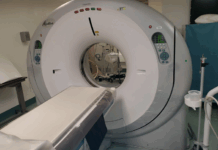Tartu scientists working in the field of nanotechnology have developed glass that can change their indicator such as transparency. Such glass consists of two glass plates, each of which is covered with transparent oxides of India and tin from the inside, and between them is a gel layer with liquid crystals. This very layer has the ability to change its own transparency when electric current passes through it. In the usual state, this layer is opaque, and, accordingly, the glass too. When the mode is turned on, the current passes through the layer of oxides, and under its influence, liquid crystals change their position, and the glass becomes transparent.
Before this, the inventions of the window with variable transparency already existed, but they were made on the basis of polymers and were much more expensive. Another problem of such windows was instability to ultraviolet. Accordingly, glass of this type was not suitable for double -glazed windows.
Plastic windows in the city put forward a number of requirements to manufacturers. The first is a small price. The second is the simplicity of production. Glass according to Tartu technology can be made at room temperature. In addition, old technologies suffered from the fact that the glass has a slightly wavy surface, and because of this, the application of any substances to glass is very often uneven. The new technology proposes to perform the application using a sprayer for painting, modified specifically for these purposes. Ultraviolet is not harmful to such a window.








